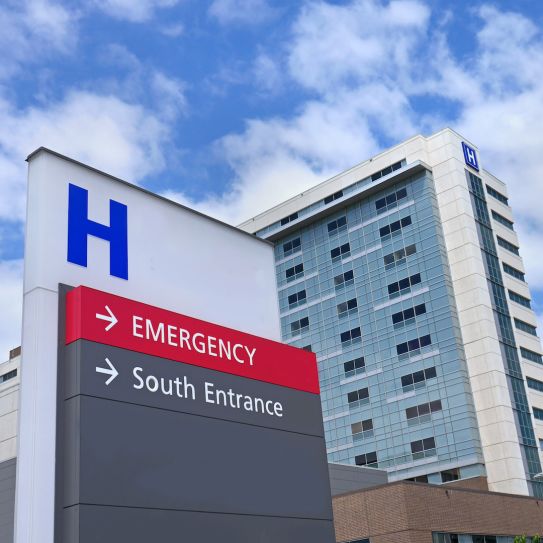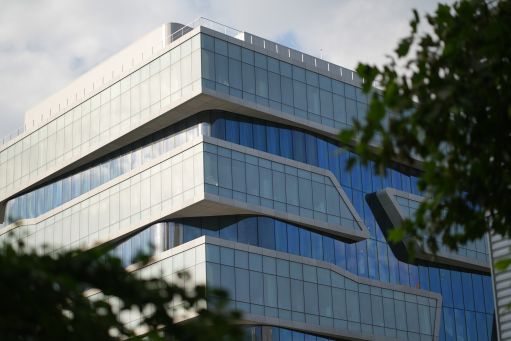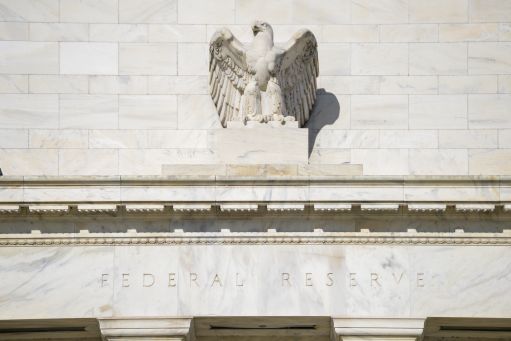Do Hospital Mergers Bring Down Costs?
New analysis shows that examining marginal costs provides a clearer picture of potential savings.

The conventional wisdom has always been that when hospitals merge, it results in savings for healthcare providers and patients.
“When mergers are brought before the Federal Trade Commission, the argument is that these efficiencies will allow hospitals to cut costs,” says Ashley Swanson, assistant professor of economics. “Then hospitals would, in theory, be able to lower prices, increase quality, and pass savings on to consumers.”
But in fact, costs go down only by a small amount following a merger, Swanson says, while the quality of care is mostly unaffected and hospital prices increase.
According to Swanson in her forthcoming paper in the RAND Journal of Economics, “Mergers and Marginal Costs: New Evidence on Hospital Buyer Power,” co-authored with Stuart Craig and Matthew Grennan of the Wharton School, to see the full effect of a merger, pricing analysts should focus on marginal costs, which include consumable medical supplies such as stents, rather than average costs.
Using a new dataset, the researchers found that for hospitals being acquired, prices went down by 3 percent for a subset of medical devices known as physician preference items, or PPIs. PPIs are “most-used” tools and can include everything from scalpels to high-tech machines used in surgical procedures.
Swanson also determined that the prices for PPIs for the acquiring hospitals go up slightly.
“Once you put together the effect on costs from the target of a merger and on the acquirer, and consider all products, the amount of savings goes down,” Swanson says. “If you had a one-to-one merger of two hospitals, the overall savings would be only one half of a percent.”
The researchers performed several subgroup analyses which determined that savings on PPIs tend be greatest for hospitals that are being acquired by larger systems.
“This is where a smaller hospital’s bargaining leverage with medical-device manufacturers increases because they are becoming part of a larger system,” Swanson says.
The research also found that when hospitals seek to reduce costs through mergers, location matters.
“These savings tend be larger when the merger target is acquired by a local system, rather than one in some other part of the country,” Swanson says.
But mergers can be a double-edged sword, because if hospitals’ bargaining power goes up due to a local acquisition, this will give hospitals more leverage with both suppliers and insurers, and research has found that the latter effect could result in costs being passed on to patients.
“This is not going to be a positive finding from the perspective of antitrust authorities,” Swanson says. “They ultimately care about whether consumer prices go up.”
Swanson adds that it is unclear how different hospitals have been weathering the financial shocks of the COVID-19 pandemic, but notes there have been controversies over larger hospital systems receiving more generous government relief packages.
About the Researcher
More Features

Value Investing: How CBS is Staying Ahead of the Curve
Learn how Columbia Business School is updating its acclaimed value investing curriculum to align with a rapidly changing financial landscape.

The Fed and Interest Rates: Is Flexibility the Best Approach?
Professor Pierre Yared talks about his recent research, which looks at the rising popularity of guiding monetary policy through target-based rules.

Interest Rates and Inflation: What’s Next for the Federal Reserve?
Professor Pierre Yared describes why the U.S. economy is unlikely to see an economic downturn comparable with the 1970s.

Understanding the Impact of Breakthrough Technologies
Dean Costis Maglaras discusses his new class, shares thoughts on returning to the classroom after three years.
Rise to the challenge.
The COVID-19 pandemic has changed the world of business, while bringing historical inequities and injustice into sharp relief.
Subscribe to Leading Through Change to receive the latest insights from Columbia Business School to help you navigate this unprecedented time.
